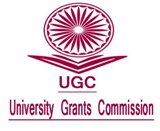Social Exclusion of Tribal Agricultural Labourers of Kerala
DOI:
https://doi.org/10.26725/JEE.2017.4.29.5966-5971Keywords:
Tribe, Adiya, geographic exclusion, economic exclusion, political exclusion, socio cultural exclusion, KeralaAbstract
The literacy rate and standard of living of the tribal people in Wayanad district in Kerala is still very low and constant efforts are being made by the State government and Central government to improve their conditions. The present study was conducted during 2016-17 in districts of Thirunelly, Mananthavady and Panamaram panchayats. From each panchayat, 30 tribal women and 10 men agricultural labourers were selected making to a total of 120 respondents. The study shows that majority of the tribal women experienced high level of geographic, economic and political legal exclusion.References
Anoop, R. J. (2013). Social exclusion of tribal agricultural labourers: the case of paniya tribe of Wayanad. Unpublished M.Sc. (Ag) thesis, Kerala Agricultural University, Thrissur, 83p.
Chandrakumar, A. (2016). A Study on Social Exclusion of Adiya Tribal Community of Wayanad District, Kerala, Unpublished M.Sc. (Ag.) thesis, University of Agricultural Sciences, Karnataka, 146p.
Prabhu, P. (2011). Sustainable Tribal Development. Journal of Public Administration. 39(3): 479-487
Downloads
Published
How to Cite
Issue
Section
License
Authors who publish with JEE agree to the following terms:
- Authors retain copyright and grant JEE right of first publication with the work simultaneously licensed under a Creative Commons Attribution License that allows others to share the work with an acknowledgement of the work's authorship and initial publication in this journal.
- Authors are able to enter into separate, additional contractual arrangements for the non-exclusive distribution of the journal's published version of the work (e.g., post it to an institutional repository or publish it in a book), with an acknowledgement of its initial publication in this journal.
- Authors are permitted and encouraged to post their work online (e.g., in institutional repositories or on their website) prior to and during the submission process, as it can lead to productive exchanges, as well as earlier and greater citation of published work (See The Effect of Open Access).
Extension Education Society
https://creativecommons.org/licenses/by-nc-sa/4.0/
This work is licensed under a Creative Commons Attribution-NonCommercial-ShareAlike 4.0 International License.













.png)

